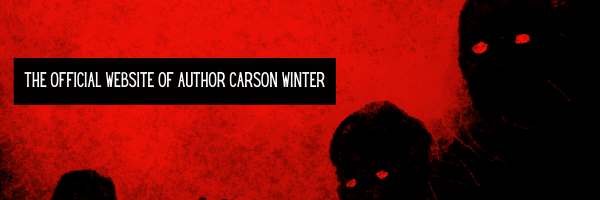I first discovered Kurt Fawver in the pages of Vastarien, where his story/play “The Gods in Their Seats, Unblinking,” left me feeling like I was in the presence of weird horror’s latest master. Here was a story that was Ligottian in all the most delicious ways—flexing its format to the breaking point while delivering legitimate existentialist chills. From there, it was no surprise that The Dissolution of Small Worlds became my new must-read. I had joined the cult of Fawver, and in my new devotion I proselytized his mastery to all of my weirdest friends.
Fawver’s work, for better or worse, is almost designed to resonate with me. It’s absurdist, dark, sometimes funny, and oftentimes unrelentingly bleak. It’s the sort of fiction that reminds me why horror became a lifelong passion. And now, with the release of We are Happy, We are Doomed, I am once again in awe of what Fawver brings to the Weird.
While We are Happy, We are Doomed is a short story collection, it feels unfair to directly compare it to The Dissolution of Small Worlds, because Fawver’s latest release is not quite as traditional of a short story collection. We are Happy… is hyper-focused on Fawver working in a particular mode—that of sociological horror. The stories here often focus on communities and are written almost as if they were non-fiction essays or snippets from a history book. If I were to describe this collection to anyone, I’d say it’s something like a meeting of Franz Kafka and Ken Burns. Many of the stories are told through a knowing eye-in-the-sky, describing the evolution of a community after coming in contact with some strange aberration. Absurdity lies at the heart of We are Happy, We are Doomed, and it’s this dissonant sense of oddity that teases out its horror.
Opener, “The Bleeding Maze: A Visitor’s Guide,” guides the reader through its titular distortion, but doesn’t merely linger on it as an oddity. In Fawver’s fiction, there’s always a progression of strangeness that goes further than one can imagine. The way Fawver introduces these scenarios, then spins them out naturally toward unnatural conclusions, makes for compelling fiction. While these stories could be newspaper clippings from another dimension, they never feel dull or dry. If there’s one lesson to be taken from We are Happy, We are Doomed, it’s that strangeness begets more strangeness.
While sometimes Fawver’s penchant for absurdity veers into the heavy-handed (see: “The Man in the Highchair”), oftentimes the stories straddle their sense of the uncanny with legitimate horror. “The Richview Massacre” is one that comes to mind, where despite the story unraveling from something as banal as pizza, there is still a real sense of the Weird at play. For me, Fawver’s writing is most impressive when it takes on silly topics and reshapes them into bleak visions of fractured communities. As many of us feel more and more divided and defined by our beliefs and locales, We are Happy, We are Doomed holds a mirror to our own connections, and forces us to consider not just the ones we have made, but the ones that may be demanded of us.
To say that the dominant voice of We are Happy… is that of a history book isn’t quite true though, as Fawver also plays with form to get at his finest results. Two of my favorite stories in this collection deviate in delicious ways from Fawver’s bird’s-eye view of communities grappling with the strange. In “Extinction in Green,” the story is told through a series of sparse diary entries, providing a peculiar escalation of one distortion on a small group of people. This story, juxtaposed with the others in the collection, feels acutely claustrophobic. It’s a reminder that the scope of Fawver’s interest isn’t only towns and cities, but people joined by circumstances—no matter how minute. Another story that utilizes a meta format to great aplomb, is “Rule and Regulations of White Pines, Vermont.” This is one of the best stories in the collection, and it’s a great reminder that there’s no better narrative device than a ticking clock—which this list of peculiar rules and lore provides. We are Happy, We are Doomed has enough diversity in storytelling, that even with a collection that’s this cohesive, it never suffers the effects of feeling samey. Each distortive event is so specific and strange, that even next to so many similarly themed stories, they each manage to stand on their own.
When we’re talking about modern weird horror, we can’t not talk about Kurt Fawver. His fiction is distinctive. It carries the torch of folks like Kafka, Ligotti, and Padgett, while expressing a singular obsession and perspective unique to the author. Fawver’s brand of absurdist horror is as bizarre as it is unsettling. It plumbs the depths of what makes us human, exploring the one thing about humanity that seems to define us—our relationships to each other. We are Happy, We are Doomed, in that respect, feels like an evolution of both Lovecraft’s and Ligotti’s cypher-like protagonists—the first person automatons that represent the individual as a speck in an infinite blackness. Fawver works in a similar manner, except the “I” becomes a “We.” In We are Happy, We are Doomed our collectivity is not enough to fight off the madness, it’s just more fuel for the fire.

